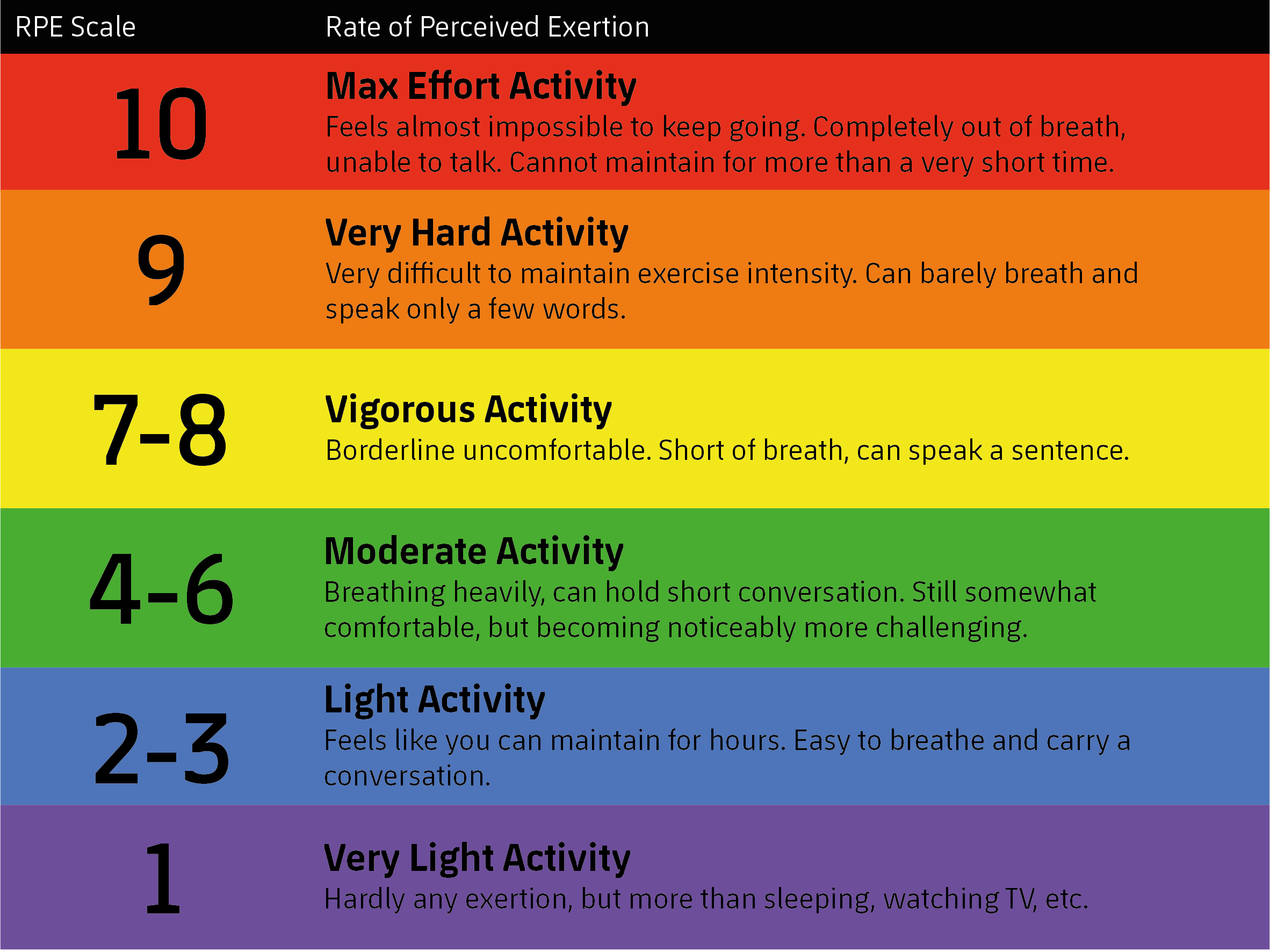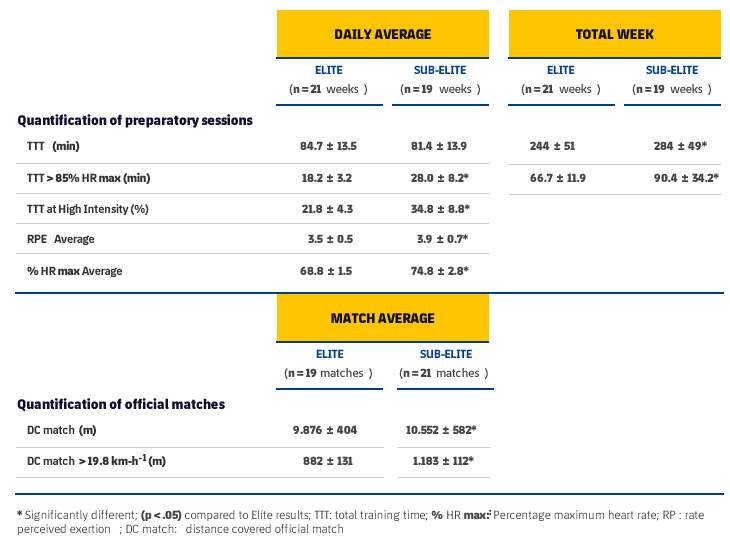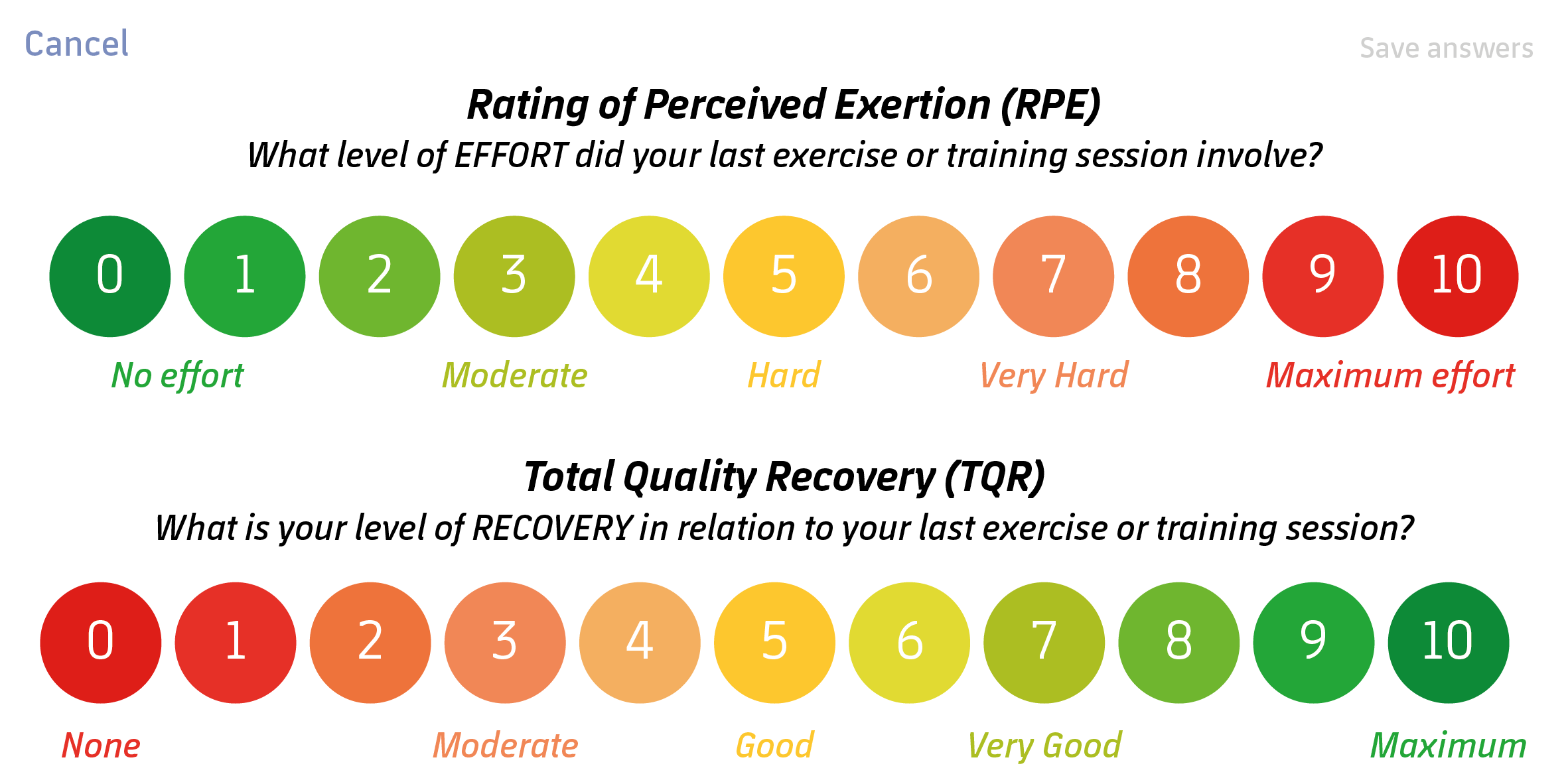April 8, 2019
Performance
Sports Performance
Team Sports
THE INFLUENCE OF THE PERCEIVED EXERTION RATING ON FOOTBALL TRAINING AND COMPETITION.
Monitoring training load is one of the fundamental tools for optimising the performance of both elite athletes in general and football players in particular. This monitoring includes not only the purely conditional or biological demands but also the psychological demands – and it is these that allow us to personalise and adapt training and recovery processes.
One of the resources used for monitoring is the “Rating of Perceived Exertion (RPE)”, a simple scale based on the personal sensation of fatigue and effort intensity felt by the athlete. Many studies have demonstrated its validity by observing its relationship with other internal load variables such as lactate concentration in the blood or heart rate (Moalla et al, 2016; Sanchez-Sanchez et al., 2017). However, until recently the scientific world had little knowledge of its practical application or its relationship with other load parameters such as training time, particularly at high intensity (Malone, 2018; Murray, 2017).

Antonio Gómez, physical trainer for F.C. Barcelona’s first division team, participated in two studies which aimed to answer these questions. One of these studies also allowed the researchers to determine whether there were training load differences between elite and sub-elite teams (first and second division) and whether conditional performance (the distance covered by players during a match, especially at high speed) was related to improved results in competition. The results were published in the Revista de Psicología del Deporte and in the magazine Anales de Psicología.
A Ground-Breaking Study
The main study examined a Premier League team and a Championship Division team (equivalent to the first and second divisions in Spain) for approximately twenty weeks. All training sessions were assessed using variables such as the total time of the training sessions, the percentage of training time at high intensity, the heart rate and the RPE. In addition, a multi-camera system was used to collect data on the distance covered by each player during match day as well as the distance covered at high speed (>19.8 km/h). “It was the first time a study like this had been carried out, comparing these variables in football”, explained Antonio Gómez.

After analysing the correlation between the data, it was verified that the RPE significantly correlated with all the training session variables: total time, training time at high intensity and the heart rate average. “This proved that it is a simple, reliable and a free tool for quantifying training load”, assures Gómez.
The researchers also observed that the RPE was greater in the sub-elite team than in the elite team, as were the distances covered (total metres and distance covered at high speed) in each match. In this respect, previous studies had found contradictory results in one way or another. ”There are many factors that can affect the effort distribution“, recognizes Gómez. “The advantage of our study is the fact that both teams followed the same training methodology and had the same technical team of coaches and trainers. This encourages us to think that the higher technical-tactical level of elite football players allows them to regulate effort to a certain extent.”
This research led to a surprise when the correlation between distances covered during the matches and the final result of each event was analysed for the first time. In general, distances are greater during matches that end with a win, even though the second study could not confirm this association. Neither could it confirm the RPE results. “In reality, due to the stochastic and multidimensional nature of football events, there is no training variable that has clearly shown a correlation with the competition results”, recognizes Gómez. What the results do show is that a higher load, like the one that sub-elite players have, does not negatively influence their performance. “This means that there could be a margin for improving training; not necessarily to train more, but to train better, adjusting the variability and interconnection of training situations, for example.”
Conclusions and Future Research
The main conclusion of these studies was that the Rating of Perceived Exertion is a simple and reliable tool for quantifying training load. “Today, we use it for the entire club, as a variable that provides us with information about the internal load – the effect on the body – of the entire training process. We complement it with GPS data which gives us objective measurements of external load – the workload.”
This monitoring is the starting point for many other studies, “One of the current areas of research at the club aims to establish the exact relationship between this perceived exertion and each one of the variables measured by GPS, including distance, covered, distance covered at sprint, metabolic power or the number of maximum accelerations. This is what we are focusing on at the moment, and we are continuing to make progress…”, concludes Gómez.

References:
Malone, S., Mendes, B., Hughes, B., Roe, M., Devenney, S., Collins, K., & Owen, A. (2018). Decrements in neuromuscular performance and increases in creatine kinase impact training outputs in elite soccer players. The Journal of Strength & Conditioning Research, 32(5), 1342-1351.
Moalla, W., Fessi, M. S., Farhat, F., Nouira, S., Wong, D. P., & Dupont, G. (2016). Relationship between daily training load and psychometric status of professional soccer players. Research in Sports Medicine, 24(4), 387-394.
Murray, N. B., Gabbett, T. J., & Townshend, A. D. (2017). The use of relative speed zones in Australian football: are we really measuring what we think we are? International journal of sports physiology and performance, 13(4), 442-451.
Sanchez-Sanchez, J., Hernández, D., Casamichana, D., Martínez-Salazar, C., Ramirez-Campillo, R., & Sampaio, J. (2017). Heart rate, technical performance, and session-RPE in elite youth soccer small-sided games played with wildcard players. The Journal of Strength & Conditioning Research, 31(10), 2678-2685.
The Barça Innovation Hub team
KNOW MORE
CATEGORY: MARKETING, COMMUNICATION AND MANAGEMENT
This model looks to the future with the requirements and demands of a new era of stadiums, directed toward improving and fulfilling the experiences of fans and spectators, remembering “feeling” and “passion” when designing their business model.
CATEGORY: FOOTBALL SPORTS PERFORMANCE
Through the use of computer vision we can identify some shortcomings in the body orientation of players in different game situations.
CATEGORY: MEDICINE HEALTH AND WELLNESS
A health check must detect situations which, despite not showing obvious symptoms, may endanger athletes subject to the highest demands.
CATEGORY: FOOTBALL TEAM SPORTS
In the words of Johan Cruyff, “Players, in reality, have the ball for 3 minutes, on average. So, the most important thing is: what do you do during those 87 minutes when you do not have the ball? That is what determines whether you’re a good player or not.”
CATEGORY: MEDICINE HEALTH AND WELLNESS SPORTS PERFORMANCE
Muscle injuries account for more than 30% of all injuries in sports like soccer. Their significance is therefore enormous in terms of training sessions and lost game time.
DO YOU WANT TO KNOW MORE?
- SUBSCRIBE
- CONTACT
- APPLY
KEEP UP TO DATE WITH OUR NEWS
Do you have any questions about Barça Universitas?
- Startup
- Research Center
- Corporate